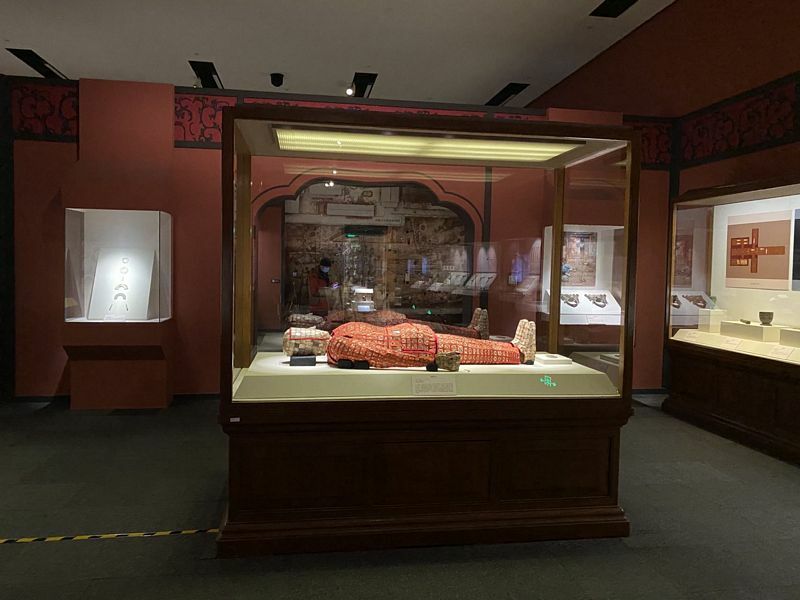Everything about China - in one Museum!
National Museum of China
Location: East side of Tiananmen Square. (nearest subway station is Tiananmen Dong, which exits directly outside the entrance to the museum)
Opening: 09:00 – 170:00 Tues – Sun (closed on Mon)
Cost: Free! (book ahead, bring passport or photo ID)
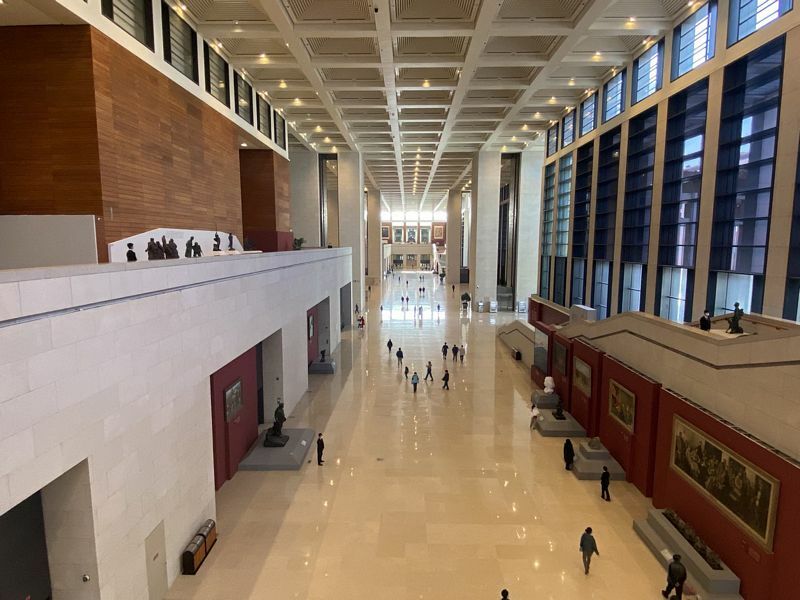
This truly massive museum is one of the Ten Great Buildings of Beijing, built in 1959, and flanking almost the entire east side of Tiananmen Square. Previously this building was home to two separate museums; the Museum of the Chinese Revolution (which I visited in 1999, my only previous time inside here), and the National Museum of Chinese History. Since 2003 though this has been simply the National Museum of China, which closed for a long four-year renovation in 2007 and opened in the current form in 2011.
Visiting the National Museum of China is a pretty daunting task, if you are looking to see most or all of the exhibitions anyway. It took me three separate visits over the course of a week, of 2-3 hours each time, to get around the whole thing, so budgeting an entire day for a good look around is not excessive at all. It really is that big – as least there is a decent coffee shop at the north end of the building, and you can find groups of people sitting down in various areas eating snacks they have brought in themselves – a smart move.
The highlight though, is clear – taking up the entire basement is the permanent exhibition ‘Ancient China’, and it is worth coming to the National Museum only to go to this exhibit.
I spent more than two and a half hours in this part, and was moving fairly quickly too, but Chinese history is deep and vast, and also complex too. The idea of Chinese history being just a clean series of successive dynasties is disabused of the visitor at the entrance area which lists the complex series of states and kingdoms over the last few thousand years, plus the series of overlapping ‘Cultures’ (a term used here to denote states and groups of people whose systems are not well recorded, those who lived before the 21st century BCE).
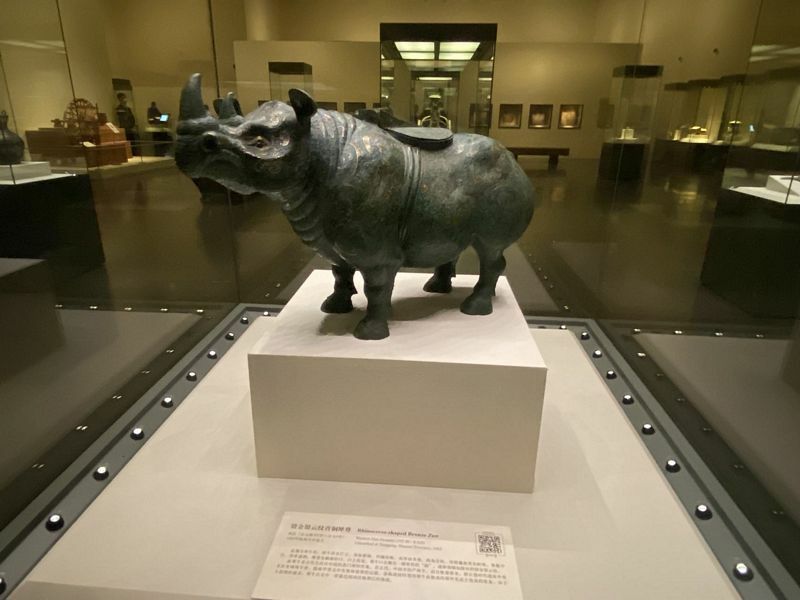
This whole exhibit is bilingual, with high-quality English translations added to every exhibit. Something which shows up the lame efforts in many of the temporary exhibits in the rest of the museum who simply didn’t bother with what is a pretty base standard for international visitors - even if, at the time of writing in November 2021, there aren’t very many in Beijing.
The whole of Ancient China is well laid-out, beautifully lit, and contains just a huge collection of amazing artefacts, presented to give insights into the lives of certain folks and societies throughout China’s long history. Of course, much of what is on display here is from excavations of tombs, and the common man didn’t tend to be buried in a full jade sarcophagus, or with ornate swords, or with a bronze model rhinocerous, so this represents the upper classes, but this is how much of history is recorded everywhere, and so be it. Some of the pieces here are mind-blowingly intricate, elaborate, and just so impressive. It really is a treat, even if the narrative is dense and confusing – by virtue of its innate complexity, not a deficit in explanations by the curators.
At the end of the Ancient China section is a fairly decent gift shop, the best piece available being a book containing a host of photos of the collection. It’s an exhausting end, and the fact that the exhibit is so huge and yet still has to get through the entire three centuries of the Qing Dynasty in a handful of rooms is indicative of the difficulties of trying to cover such a history in such a space, which could never be big enough. But for visitors to China, or even just those looking for a refresher on what separates the Western Han from the Southern Song, or just what the difference between the Spring & Autumn Period and the Warring States Period is, this is a good start for sure!
On my second visit I decided to focus on the other main permanent exhibition to start with; this is called ‘The Road of Rejuvenation’ and covers roughly the middle of the 19th century up to the near modern-day. From the mid 19th to mid 20th centuries we cover what is considered the ‘Century of Humiliation’ suffered by China, at the hands of their own weak leaders, rapacious foreign imperialists, and invaders & occupiers. A tough period of time which is still cited to this day in justification for various attitudes taken by the Chinese government when it comes to foreign relations.
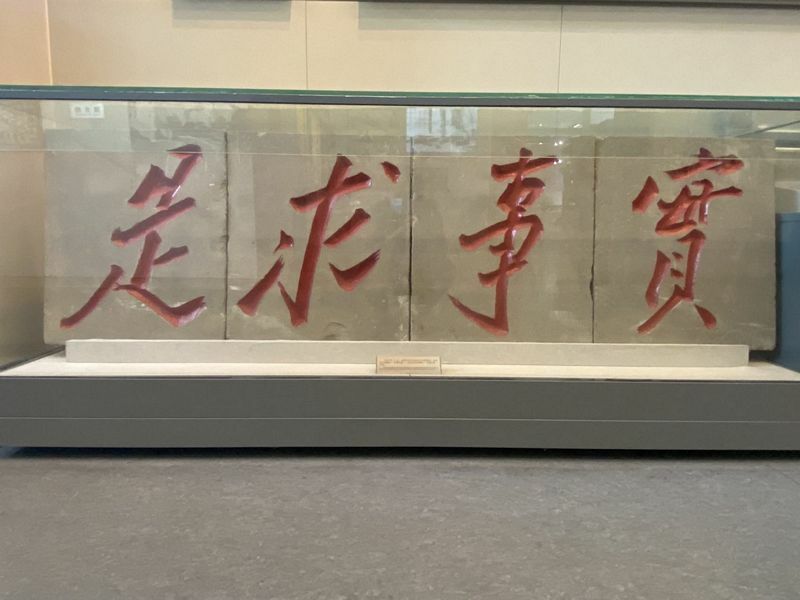
I was looking forward to this exhibit as this is my favourite period of Chinese history to read about, as it is well-recorded, epic in scale, and contains a great many remarkable stories. But I was somewhat disappointed on a few levels. First of all, there is not much translation offered here, which really slowed me down. A lot of the artefacts have English captions, but none of the photos do. Still, anyone with some knowledge of this stuff will find it easy enough to get through, but should such knowledge be assumed before entering this exhibition? Anyway, it didn’t ruin the experience, I just felt that more of an effort could be made at what is, after all, the actual National Museum of the country.
I also felt some of this was a bit rushed. Surely the Taiping Heavenly Kingdom deserves more than about a metre of cabinet space? The same with the Boxer Uprising. These are blown past, with just a few pieces to display. However, what pieces! Hong Xiuquan’s imperial stamp is here, as are some more amazing genuine pieces of history – Puyi’s imperial stamp, the clothes worn by (and again, the personal stamp of) Yuan Shikai as he subverted the early republic to become emperor, Mao’s hat, the keys to Beijing’s city gates. Loads of this stuff is on display, not just personal stamps (although there are plenty of those, including that of Sun Yat-sen, which is broken for some reason).
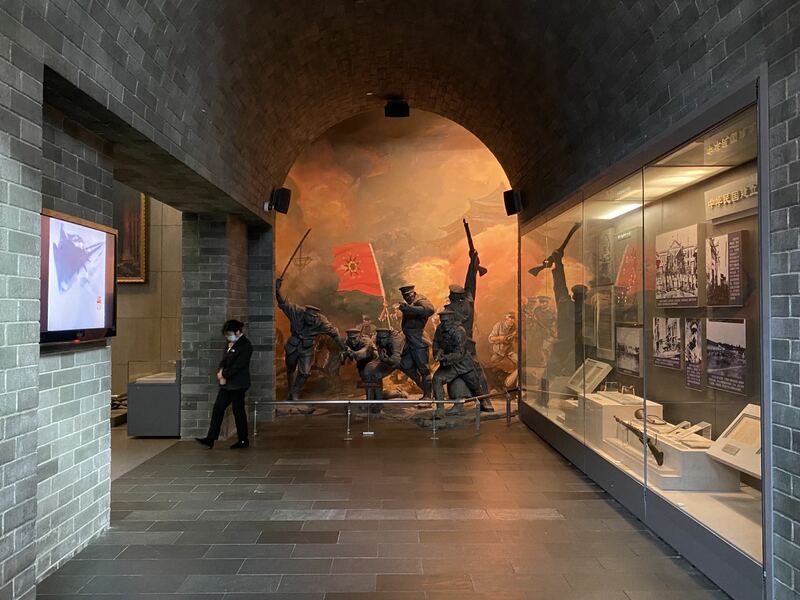
As the history told here gets into the era of New China and CPC rule it moves from main simple nationalism up to include hagiography as well, and in the same vein as that I have been through in a range of other museums on this project. Of course for specific events, some of the other museums I have visited on the Museums of Beijing odyssey contain more detail and context, and again there is only so much recent history that can be crammed into the space available to tell this story, but the last few rooms of ‘Road of Rejuvenation’ are very large and are dedicated once again to the primary leaders of China: Mao, Deng, Jiang, and Hu (again, no room for poor old Hua Guofeng).
It seemed to me that maybe these parts could have been moved elsewhere, and the fascinating history of the last couple of centuries in China expanded upon without such a commitment to individual glorification taking up so much space. I spent about an hour and a half in Road of Rejuvenation, and just ten minutes in this last part of it.
However, at the end I realised that one leader was missing: Xi Jinping, the current President. I had seen the signs for another permanent exhibit called ‘The Road of Rejuvenation: a New Era’ which seemed to take up about half as much space again as its sister exhibit, and then I realised that this whole thing was probably about the Xi era. Mercifully it was not open, or not complete. Anyway, having lived here through the whole of the Xi era so far I am familiar with the unending triumphs and successes of this ‘New Era’ so probably don’t need a massive museum exhibit to remind me. So, onwards to the art sections I headed.
Wikipedia claims that the National Museum of China is the second largest art museum in the world, after the Louvre. I’m not sure this can be true though, isn’t the Hermitage an art museum? And most of the National Museum is history rather than art, but anyway there are a number of temporary exhibits devoted to art in various forms, and I decided to get through most, if not all, of them.
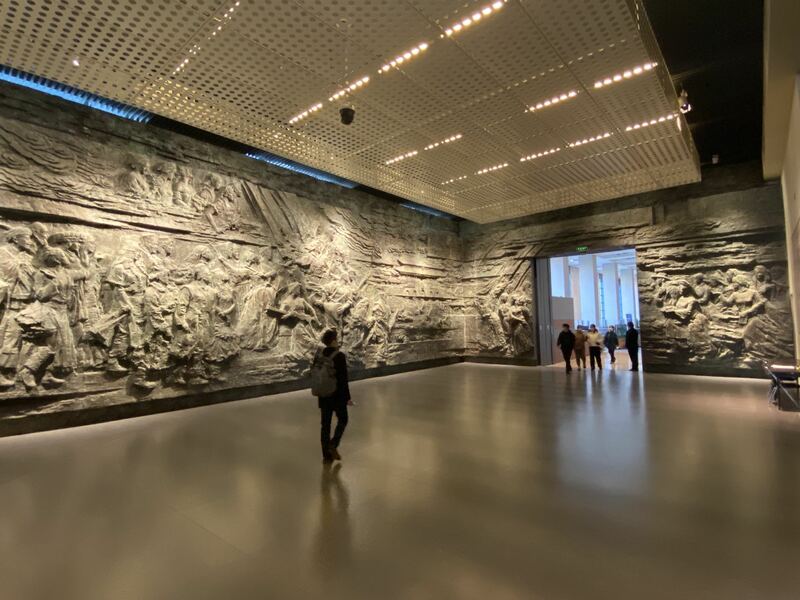
Some were displays of paintings of Mao Zedong and Deng Xiaoping, people I had seen probably enough of for one morning already. Then there was a fascinating display of Ancient Chinese Buddhist Sculpture, Some fine Fine Arts on display, cliff inscriptions, and one temporary exhibit that had so much text, and all of it translated into English too, that it was somewhat overwhelming – this one called ‘The Special Exhibition of Shangshan Culture – Archaeological Discoveries in Zhejiang’ and focusing on the early cultivation of rice by the people of the pre-dynastic Shangshan Culture. The clearly generous funding of this particular exhibit would have been helped by being from President Xi’s former fief of Zhejiang no doubt, and for the benefit of visitors to this section, which was one of the best.
For my final stop on the second visit, I stopped into the cavernous Central Hall. This is the middle part of the ground floor, directly in front of what would be the main doors leading out to Tiananmen Square (although now the entrance for visitors is on the north side of the building, right next to the entrance to Tiananmen East Subway Station). Here there is a huge video screening looping a short documentary about the ceremony marking the founding of New China which took place in the very square just outside, on Oct 1st 1949. Around the hall are relics of that time including cannon, massive lanterns, and the original flag raised as Mao Zedong proclaimed the People’s Republic to be founded.
However, a few days previously at the Xiangshan Museum of the Founding of New China I also saw the original flag raised in Tiananmen Square at that moment, or at least what a member of staff told me was the original. Which is it? Is there a dispute? Did I misunderstand? Any of these are possible (probably the latter though).
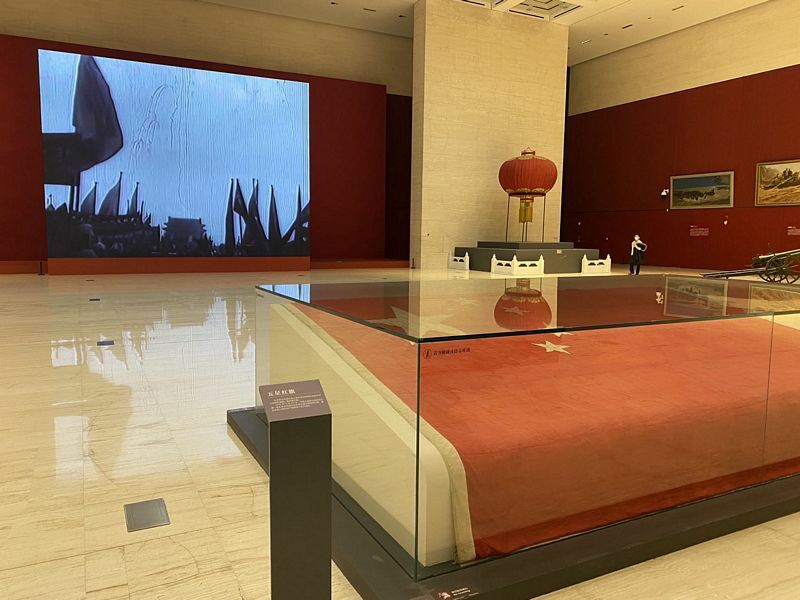
A curious moment at the end of my second visit happened in the exhibition of China’s rocket and nuclear weapon development (un-succinctly titled ‘Collaborative Innovation and Self-reliance: An Exhibition on the Spirit of “Two bombs, one Satellite”’. The part that, more than any other, could have done with translations in the display. Here one of the very numerous museum staff decided to tell me I wasn’t allowed to take photos, in the entire museum. I disputed this and pointed out that I was in my sixth hour in this place and had taken hundreds of photos, plus so had everyone else. Anyway, that’s the rule she said, which I then completely ignored, to no repercussions at all. I saw no signs ordering photos not to be taken anywhere else, at any time. So, this was an odd moment. Perhaps she decided this room was sensitive and my pics of the operation of photos of decades-old technology shouldn’t be allowed? I guess I will never know for sure!
Back for a third visit and the last of the artistic exhibitions are on my list. The first stop is the small show ‘Rites of Harmony: Special Exhibition of Bronze Ding of the Shang and Zhou Dynasties’ which was terrific. ‘Ding’ are three-footed vessels used for ceremonial and storage purposes, and these lovely ones on display are great examples of some ancient craftsmanship. Again, some translation would be welcome, plus perhaps fewer than a dozen staff standing around cluttering up the place, which was only a couple of rooms. An exhibition about inner Mongolia was not bad, and a show of ancient coins was OK, but not close to as good as the actual Numismatic Museum which is just a few hundred metres away as the crow flies, behind the Great Hall of the People on the west side of Tiananmen Square.
‘Ancient Chinese Jades’ is in an exhibition space that would benefit from a bit of music and a lick of paint, but the neighbouring exhibit of ‘Mirrors of Eternity: A Cultural Exhibition of Ancient Chinese Bronze Mirrors’ was very good (without translation of course, sadly). The final room for me was Central Hall 2, which is three floors above the original Central Hall. Here there was a kind of greatest hits of Chinese scientific and technological innovation on display.

The astrological implements used at the Beijing Ancient Observatory by Guo Shoujing, the invention of various products such as gunpowder, silk processing, and porcelain, the voyages of Admiral Zheng He, key engineering projects. Then the more modern deep-sea mining, military advancements, and space exploration are all displayed here. Before I am finally done with almost all of the National Museum of China, an its back to the coffee shop for a rest. Here, perhaps in a sign of how few visitors (or at least foreign visitors) I am recognised by the staff due to my apparently idiosyncratic order made a week earlier, of a cup of tea, no milk or sugar (crazy, I know!).
At the time of writing the National Museum of China must be booked in advance via either their WeChat mini-app or the museum's official website, and a maximum of 3500 people are admitted from 09:00 – 10:00, then another 4500 for the rest of the morning and the same number again for the afternoon. In reality though a fraction of these numbers were evident on my three visits, even given the vast size of this space. I was the only person in some exhibits at certain times, and the highest concentration of visitors was definitely to be found in the Ancient China part, and rightly so.
It would be easy to suggest combining the National Museum of China with something else nearby, like the Mausoleum of Chairman Mao, just outside the main door. Or the Palace Museum/Forbidden City, just a few hundred metres away across Tiananmen Square. Or even the Railway Museum, the Urban Planning Exhibition Hall the China Court Museum, the Police Museum, all just a short walk away. But in reality, anyone visiting the National Museum of China will find all their time and energy taken up with this place, so make separate trips even for these nearby attractions.
For me, this was one of the very best museums I have visited. I am not sure why I didn’t bother to step inside in the last two decades, but I am glad I have done so a number of times in the last few days; it is an exceptional place and even though the deficit of translations and the surfeit of propaganda can be a bit of a downer sometimes, the general value of this place is clear, especially for anyone wondering what all those millennia of Chinese history are all about!
